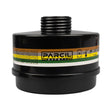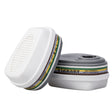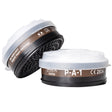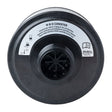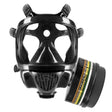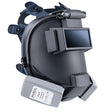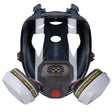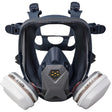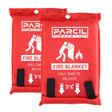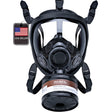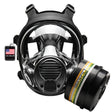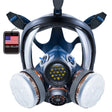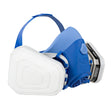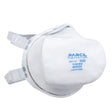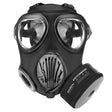How to perform automotive maintenance?
Photographed by Martin Vorel - https://martinvorel
Whether you’re looking to do some maintenance on your own personal car, truck or van, or you are wanting to open some kind of automotive shop, every garage needs essentials for when you need to work on a car. Before we dive too deep into the equipment side, let’s discuss what kind of maintenance is needed.
What kind of maintenance does a car need?
Regular maintenance is essential for keeping your car in good working condition and prolonging its lifespan. Here are some common types of maintenance that your car may need:
- Oil changes: The engine oil lubricates the engine's moving parts and helps to prevent overheating. It's recommended to change the oil and oil filter every 5,000-7,500 miles or as recommended in the owner's manual.
- Tire rotations: Rotating your tires regularly helps to ensure even wear and prolong their lifespan. It's recommended to rotate your tires every 5,000-7,500 miles.
- Brake inspections: Your brakes are a critical safety component of your car. It's recommended to have your brakes inspected every 10,000-15,000 miles or as recommended in the owner's manual.
- Fluid checks and changes: Your car has several fluids that need to be checked and changed regularly, including coolant, transmission fluid, brake fluid, and power steering fluid.
- Air filter replacement: Your car's air filter helps to keep dirt and debris out of the engine. It's recommended to replace the air filter every 15,000-30,000 miles or as recommended in the owner's manual.
- Battery maintenance: Your car's battery should be checked regularly for signs of corrosion and to ensure that it's holding a charge.
- Spark plug replacement: Spark plugs help to ignite the fuel in your car's engine. It's recommended to replace them every 30,000-100,000 miles or as recommended in the owner's manual.
- Suspension and steering components: The suspension and steering components of your car help to keep it stable and safe to drive. It's recommended to have these components checked regularly and to replace any worn or damaged parts.
Remember, the exact maintenance schedule for your car may vary depending on its make and model, as well as your driving habits and the conditions in which you typically drive. Check your owner's manual for specific recommendations for your vehicle.
What are the essentials you need for vehicle maintenance?
Here are some essential items you should keep in your garage for vehicle maintenance:
- Socket and wrench set: These are essential tools for any car owner as they help in loosening and tightening nuts and bolts.
- Screwdrivers: A set of screwdrivers in various sizes can help you fix loose screws or remove small parts.
- Pliers: Pliers can come in handy for gripping and holding small parts, as well as for cutting wires and cables.
- Jack and jack stands: These are essential for lifting and supporting your vehicle while you work on it.
- Oil filter wrench: This tool is used to remove and install the oil filter during an oil change.
- Funnel: A funnel is needed to pour fluids into the engine or other parts of the car without spilling.
- Oil drain pan: This is used to catch and dispose of used oil during an oil change.
- Tire pressure gauge: Keeping your tires properly inflated is crucial for safety and fuel efficiency.
- Brake fluid tester: This tool can help you determine the condition of your brake fluid and when it needs to be changed.
- Cleaning supplies: Keep a bucket, soap, and towels on hand to keep your vehicle clean and free of debris.
Remember, the exact tools you need may vary depending on your specific vehicle and the maintenance tasks you plan to perform. There are also special projects that may require other equipment such as respirators, fire resistant clothing, and other fire safety products.
What are special projects in automotive work that require a respirator mask?
Using a respirator is recommended in the automotive industry, especially for workers who are exposed to harmful chemicals and fumes. Automotive work involves exposure to various chemicals such as solvents, adhesives, paints, and welding fumes, which can cause respiratory problems if inhaled regularly.
Respirators are designed to protect workers from inhaling harmful particles and fumes by filtering the air they breathe. They are available in different types, such as disposable masks, half-face respirators, and full-face respirators, and must be selected based on the specific hazards present in the workplace.
In addition to using a respirator, other measures can be taken to reduce exposure to harmful fumes in the automotive industry, such as providing proper ventilation in the workplace, using appropriate personal protective equipment (PPE), and following safe work practices. It is important for workers to receive proper training on the use of respirators and other PPE to ensure they are used correctly and effectively.
Special Project #1: Painting
Automotive painting involves the use of various chemicals, such as solvents, paints, and clear coats, which can release harmful vapors and particulates into the air. A respirator is necessary to protect workers from inhaling these chemicals, which can cause respiratory problems and other health issues.
Our recommendation for best respirator for automotive painting:
T-61 Half Face Respirator with P-A-3 Filter Set SHOP NOW |
Special Project #2: Welding
Welding in the automotive industry involves the use of heat and metal fumes, which can cause respiratory problems if inhaled regularly. A respirator is necessary to protect workers from inhaling these fumes and particulates.
Our recommendation for best respirator for automotive welding:
T-60 Half Face respirator with P-A-1 Dual Purpose Filters SHOP NOW |
Special Project #3: Sanding and grinding
Sanding and grinding of automotive parts can release dust and particles into the air, which can cause respiratory problems if inhaled regularly. A respirator is necessary to protect workers from inhaling these particles.
Our recommendation for best respirator for automotive sanding and grinding:
The AG-100 Half Face Respirator A-G-1 P2 Particulate Filter SHOP NOW |
Special Project #4: Adhesive and sealant application
The application of adhesives and sealants in the automotive industry involves the use of chemicals, such as epoxies, urethanes, and silicones, which can release harmful vapors into the air. A respirator is necessary to protect workers from inhaling these vapors.
Our recommendation for best respirator for automotive adhesive and sealant application:
PD-100 Clear with P-A-1 Organic Vapor and Particulate Filter Set SHOP NOW |
Special Project #5: Cleaning and degreasing
The cleaning and degreasing of automotive parts involves the use of solvents and chemicals, which can release harmful vapors into the air. A respirator is necessary to protect workers from inhaling these vapors.
Our recommendation for best respirator for automotive cleaning and degreasing
PD-101 Full Face Respirator with P-A-3 Dual Purpose Organic Vapor and Particulate Filter Set |
Why you should have a fire extinguisher blanket in your garage or automotive workshop:
Finally, something we haven’t touched on yet is the importance of fire safety and having a fire extinguisher or fire extinguisher blanket in your garage or automotive workshop. Having a fire extinguisher blanket is essential for automotive work because vehicles contain flammable liquids, such as gasoline, oil, and brake fluid, which can easily ignite and cause a fire. The heat generated by tools and equipment, such as welders and grinders, can also create sparks and start fires.
In addition, automotive work often involves electrical wiring, which can also cause fires if short-circuited or overloaded. A fire extinguisher blanket can quickly put out a small fire by just tossing the blanket over it before it becomes a larger and more dangerous blaze.
Having a fire extinguisher or fire extinguisher blanket on hand is not only important for safety, but it may also be required by law or regulation, depending on your location and the type of automotive work you are performing. Many local fire codes and safety regulations require automotive shops to have fire extinguishers on site and to properly maintain and inspect them to ensure they are in good working condition.
It is important to select the appropriate type of fire extinguisher for automotive work, such as a dry chemical extinguisher or a fire extinguisher blanket, which is effective in extinguishing fires caused by flammable liquids, electrical equipment, and combustible materials. Proper training on how to use a fire extinguisher is also essential to ensure that workers can quickly and safely respond to a fire emergency. Check out our fire extinguisher blanket options and the differences between a fire extinguisher, suppressant and fire blanket HERE!
Check out our selection of fire safety products below! If you have any questions, feel free to email us at service@parcilsafety.com or give us a call at 855 715 1400.

